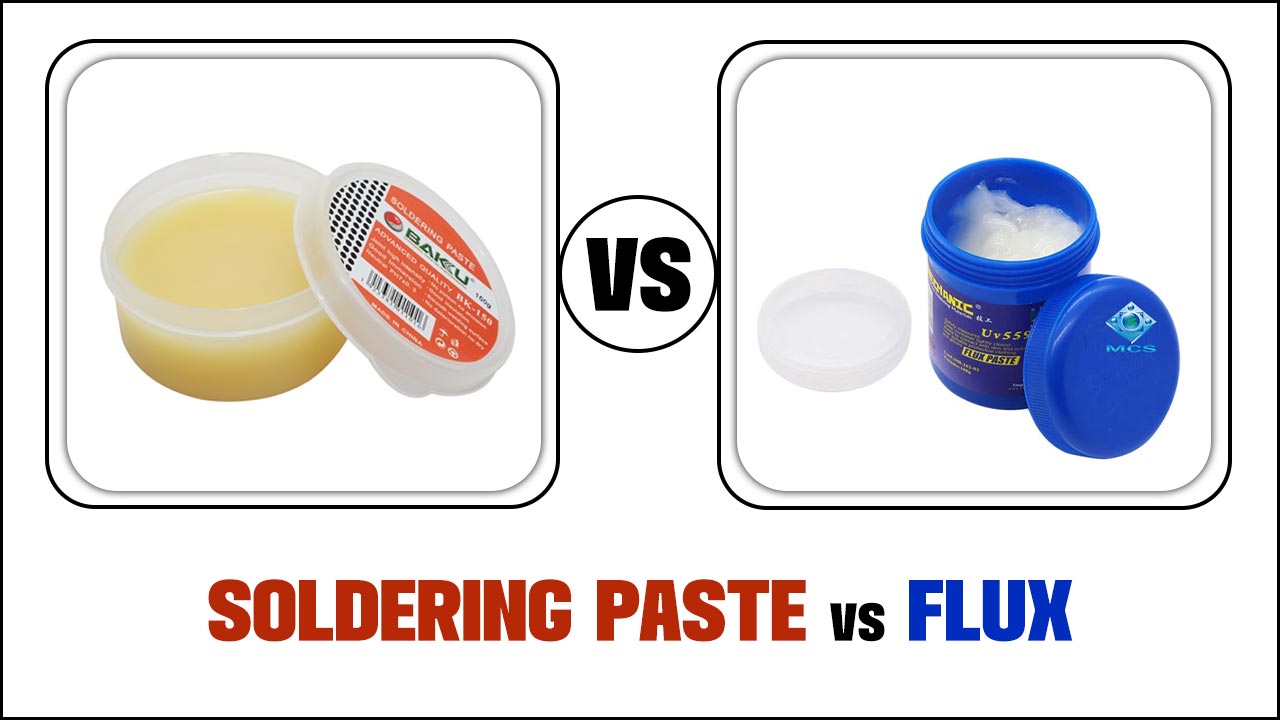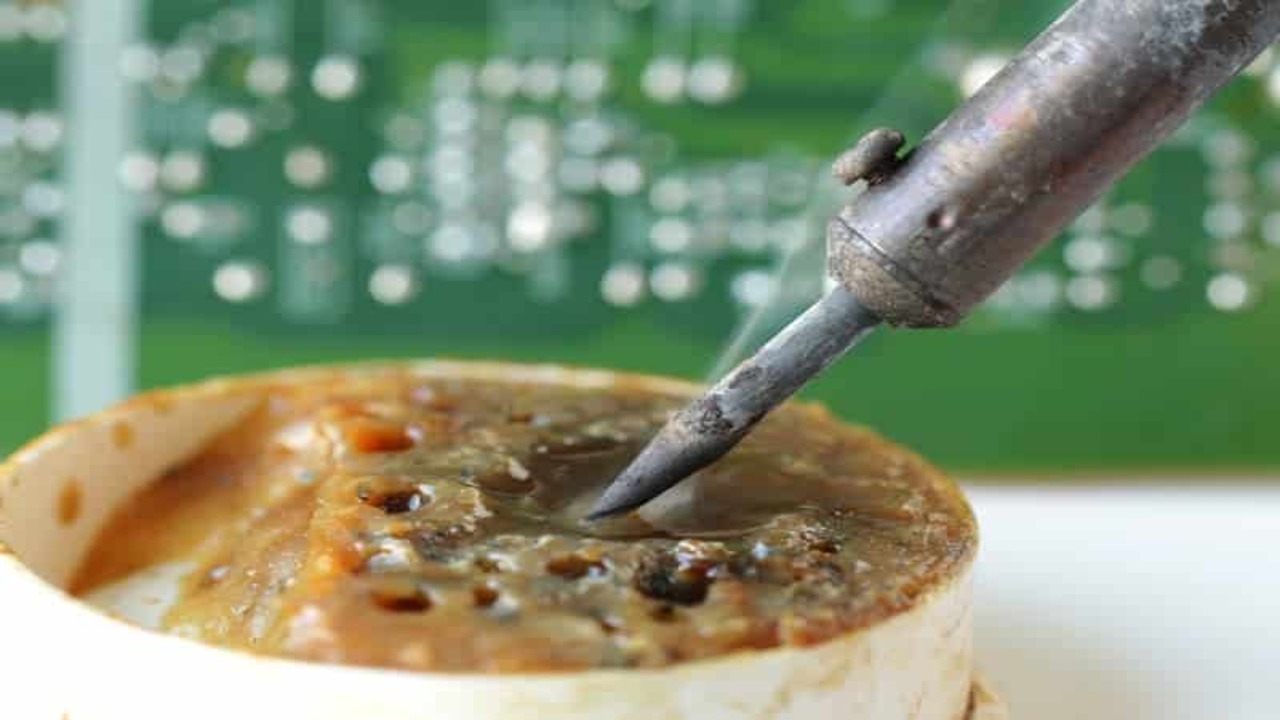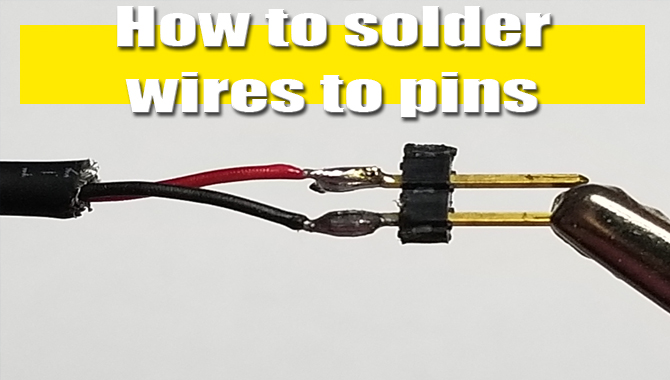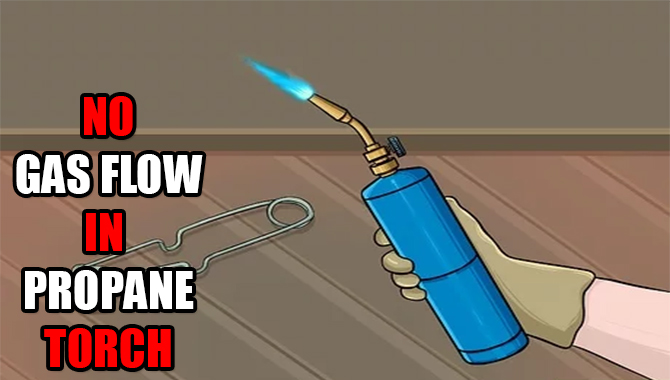Soldering is a process that involves joining two or more metals together using a filler material, such as solder paste or soldering flux. It is a critical step in the manufacturing process of electronic devices, as it provides a strong and reliable connection between components.
In this article, we will discuss the differences between soldering paste and soldering flux, and explain why one may be better than the other for certain applications. We will also provide tips on how to properly use each material to ensure a successful soldering job.
With this information, you will be able to make an informed decision when choosing the right soldering material for your project. Get ready to solder like a pro and discover the difference between soldering paste and soldering flux.

Soldering Paste Vs. Flux: A Comparison

Soldering Paste vs. Soldering Flux is an important topic to discuss when it comes to soldering. Soldering paste is a thick paste composed of a metal powder, a fluxing agent, and a binder. Soldering flux, on the other hand, is a liquid or paste that is used to improve the flow of solder and to help prevent oxidation of the metal parts being joined.
Both types of fluxes have their advantages and disadvantages, and it is important to understand the differences between them in order to make the best decision when selecting the right flux for the job. In the following article, we will discuss the differences between soldering paste and soldering flux, and how to choose the right one for your needs.
Definition
Soldering paste and soldering flux are two materials used in the soldering process. Soldering paste is a semi-solid mixture of metal powder, flux, and a binder. It is used to create a temporary bond between two pieces of metal.
Soldering flux, meanwhile, is a liquid material that is used to protect the metal from oxidation during the soldering process. It also helps create a strong bond between the two metals. Both soldering paste and flux are available in various types, depending on the type of metal being soldered.
Soldering Paste
Soldering paste is a material used while soldering electronic components. It is a semi-fluid paste containing flux and tiny metal particles. The paste is applied to the component’s contact points, and then heat is applied to the metal particles, melting them and forming a strong bond between the components.
Soldering paste improves the quality of the solder joint and helps ensure that the joint is reliable and durable. It also helps to reduce oxidation, preventing corrosion of the joint over time. The paste also helps to reduce the number of particles that may be present in the joint, reducing the chance of electrical short circuits.
Soldering Flux
Soldering flux is a chemical compound that is used to facilitate soldering by helping metals bond together. It contains an active ingredient such as rosin, which when heated, helps to clean and protect the metal surfaces while also helping to create a stronger bond. Flux also helps to prevent oxidation on the metals during the soldering process.
Flux is available in both liquid and paste form, and can be applied to the metals before they are heated. Depending on the type of flux being used, it may need to be cleaned off after use or it may stay on the metals permanently.
Uses

Soldering paste and flux both have their own unique uses, depending on the project you are taking on. Soldering paste is great for small tasks, such as soldering together small wires, and can even be used to repair small chips on circuit boards. Soldering flux is ideal for larger projects, such as soldering large pieces of metal together.
It is also great for soldering projects that require a higher heat level, such as soldering gold or silver, since it helps to reduce oxidation. Both have their own advantages and disadvantages, and it is important to understand when to use one or the other for the best results.
Soldering Paste
Soldering paste is a pre-mixed combination of flux, solder, and other ingredients. It is designed to make soldering easier and more efficient. The paste is applied to the joint prior to soldering and helps the solder to flow and wet the joint surfaces.
It is available in both lead-free and leaded varieties. The paste is usually applied with a syringe or a brush and is ideal for applications that require precise soldering or for tight spaces. The paste also provides increased heat transfer and improved wetting of the soldering joint. Soldering paste is the best choice for any soldering job requiring accuracy and precision.
Soldering Flux
Soldering Flux is a chemical paste that is used in soldering. It helps to reduce the surface tension between the two metals that are being joined, allowing the solder to adhere to the metals. It also helps remove oxides from the surface of the metals, resulting in a stronger bond. The flux also helps to reduce the amount of heat required for the soldering process.
It is available in both paste and liquid form and comes in a variety of metals. The most common type of flux is rosin-based, which is used for most soldering applications. Other types of flux include halide-based, acid-based, and silicone-based. Depending on the application, the type of flux used may need to be adjusted.
Advantages
Soldering paste and flux both offer advantages when it comes to soldering. Soldering paste is a paste that melts at a low temperature and helps to create a strong bond between two pieces of metal. It is easy to use and works to protect the metal from oxidation.
Soldering flux, on the other hand, is a liquid or paste that helps to prevent oxidation of metals. It is also easy to use and helps to ensure that the metal pieces are joined together securely. Both are effective at creating strong bonds between two pieces of metal, and both are easy to use. However, soldering paste is generally more effective at creating a stronger bond than soldering flux.
Additionally, soldering flux has the potential to cause damage to the metal if not used correctly. Ultimately, both are useful for soldering, but soldering paste is often the preferred option due to its superior effectiveness.
Soldering Paste
Soldering paste is a material used in electronics to join two surfaces or components together. It is made from a combination of metal, flux, and other compounds. It is heated until it melts and then used to join the two components together.
Soldering paste has several advantages over traditional soldering flux. It can be used to join components that would otherwise require more complicated soldering techniques. It also allows for precise application of the paste, which reduces the risk of solder splashing and other accidents. Additionally, the paste can be used to fill small gaps or irregularities that would otherwise cause electrical shorts or other problems.
Soldering Flux
Soldering flux is a chemical substance used to facilitate the soldering process by removing oxidation from the metal surfaces being joined and preventing further oxidation. It comes in a variety of forms, including liquids, pastes, and gels.
Soldering flux is essential to ensure a proper solder joint and to remain free from oxidation. The flux also helps to reduce the surface tension between the metal surfaces to be joined, promoting a stronger bond.
Additionally, soldering flux can help to reduce thermal losses during soldering, resulting in more efficient, faster, and cleaner joints. Some fluxes also have anti-corrosive properties, making them useful for soldering in harsh environments.
Disadvantages

Soldering paste and soldering flux both have their own benefits and drawbacks. When it comes to soldering paste, the primary disadvantage is that it does not easily remove oxidation from the metals being joined.
This means that the metals must be cleaned thoroughly with an abrasive material prior to soldering. Additionally, soldering paste requires preheating to a higher temperature than flux because of its higher viscosity.
Furthermore, it can be difficult to control the amount of paste used in a joint because of its thick consistency. When it comes to soldering flux, the primary disadvantage is that it is corrosive and can cause damage to the metals if left on them for too long. Additionally, it can be difficult to clean off the flux residue after soldering is complete.
It is also important to be mindful of the type of flux being used, as some types are more corrosive than others. Furthermore, some fluxes require the use of an activating agent prior to soldering.
Soldering Paste
Soldering paste, also known as solder paste, is a specialized form of solder that comes in a paste-like consistency. It is typically made up of tiny particles of solder suspended in flux, and it is used for surface-mount soldering applications.
This type of solder paste is applied to the surface of a PCB before components are placed on it. The solder paste is then heated, which causes the solder particles to melt, forming a strong bond between the component and the PCB.
The flux in the paste helps to reduce oxidation and protect the surface of the PCB during the soldering process. Soldering paste is often preferred over traditional solder flux for its reliability and convenience.
Soldering Flux
Soldering flux is a chemical compound that is used in the soldering process. It helps in the removal of oxides from the surface of metals, which in turn helps in improving the electrical conductivity of the joint. It is also used to prevent the formation of oxides during the soldering process.
There are two types of soldering flux: rosin-based and non-rosin based. Non-rosin based fluxes are generally used for electronic components, while rosin-based fluxes are used for electrical and plumbing applications. Soldering flux is a very important part of the soldering process and should always be used to ensure a successful soldering joint.
Conclusion
Soldering paste and flux are both essential materials used in the soldering process. Soldering paste is a pre-mixed paste that is applied to the area to be soldered, while soldering flux is a liquid or paste that is applied to the soldering area to help the solder flow and form a strong bond.
Soldering paste is generally used for larger projects, while flux is used for smaller projects. In both cases, they help to ensure a strong, reliable bond between the components being soldered.
FAQ’s
1.What Are The Differences Between Soldering Paste And Soldering Flux?
Ans: Soldering paste is a type of solder that is pre-mixed with flux and is very easy to use. Soldering flux is a paste or liquid flux that must be applied to the joint before soldering. Soldering paste eliminates the need to apply flux separately, therefore saving time.
The main difference between soldering paste and soldering flux is that flux is used to clean and prepare the joint before soldering, while paste is used to join the two components together.
2.What Are The Advantages And Disadvantages Of Using Soldering Paste?
Ans: The advantages of using soldering paste are that it is easy to apply, it can be used to join both metal and non-metal surfaces, and it has a low melting point. The disadvantages of using soldering paste are that it can be difficult to remove if it is not applied correctly, and it is not as strong as soldering with a soldering iron.
3.What Type Of Surface Is Best Suited For Use With Soldering Flux?
Ans: A clean, non-corrosive surface is best for soldering flux. Stainless steel, copper, and brass are all suitable materials, as they are non-corrosive and can withstand the heat of the soldering iron.
Avoid using plastic, wood, or other materials that may be damaged or corroded by the flux. Additionally, the surface should be free of contaminants such as dust, dirt, and grease, as these can interfere with the soldering process.
4.What Type Of Soldering Iron Is Best Used With Soldering Paste?
Ans: The best type of soldering iron to use with soldering paste is one with a small tip and low wattage. Soldering paste works best when heated slowly, so a soldering iron with a lower wattage will help prevent the paste from burning or melting away.
It’s also important to choose a soldering iron with a tip that is small enough to fit into the small spaces of your project. Finally, make sure the soldering iron you choose has temperature control capabilities to ensure you can accurately adjust the heat.
5.Is Soldering Paste More Suitable For Certain Types Of Soldering Projects Than Soldering Flux?
Ans: Yes, soldering paste is more suitable for certain types of soldering projects than soldering flux. Soldering paste is a combination of paste flux and metal particles such as solder, and is generally used for soldering surface mount components to a printed circuit board.
Soldering flux, on the other hand, is used to reduce the temperature required to melt the solder and to remove oxidation from the surfaces to be soldered. Depending on the type of project, one or the other may be more suitable.



![10 Best Torch For Plumbing [Reviews With Buying Guide]](https://accuratepicker.com/wp-content/uploads/2022/03/Best-torch-for-plumbing.jpg)

